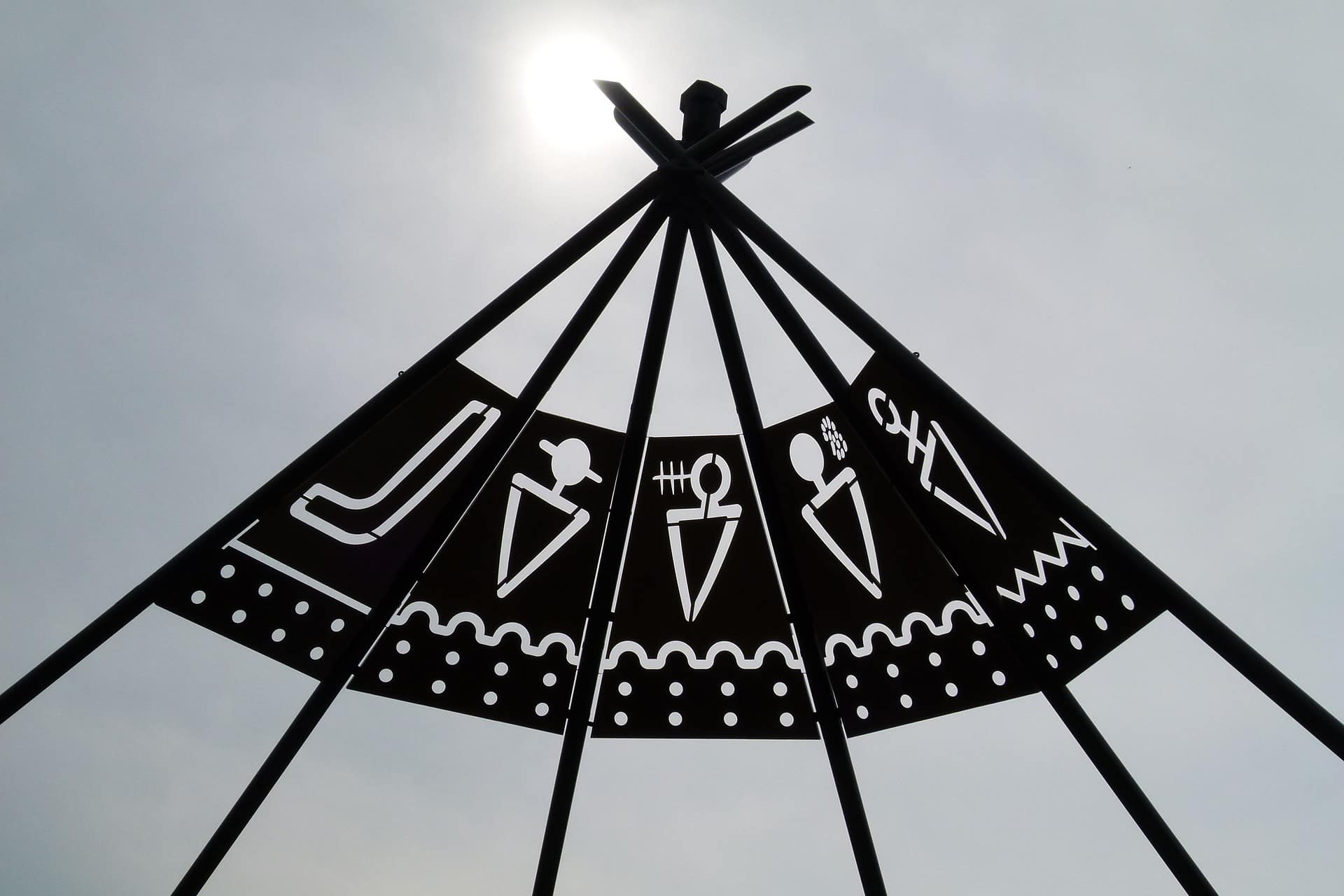Canadian Indigenous Law – A Glossary of Terms

Canadian Indigenous law can be complicated to navigate and involves a variety of terminology arising from common usage, public policy considerations, legislation, and court decisions. Below, we have set out a glossary of commonly-used Indigenous law terms and their meanings.
A
Aboriginal
A term that collectively refers to all First Nations, Inuit, and Métis peoples in Canada. While today this term is often replaced with “Indigenous” as a more inclusive term, it is still used in the language of the Constitution Act and in references to Aboriginal rights in Canadian law.
Aboriginal Title
A legal concept established in Canadian case law regarding the right to use and have jurisdiction over ancestral lands.
B
Band (or Indian Band)
Sometimes used to describe a particular First Nation or a particular group living on a reserve. Some use this term specifically in the context of a band governed by the Indian Act.
Band Council
A governing body of councillors that manages the affairs of a band or First Nation, led by a Chief. These can be established through custom or under the Indian Act of Canada. In Alberta, while First Nations are governed by a Chief and Council, they are referred to as “First Nations”.
D
Decolonization
As per Simon Fraser University’s report on reconciliation: “A socio-political agenda that seeks to redress historical and current practices that have had deleterious effects on Aboriginal peoples”.
E
Elder
A person who holds traditional wisdom and knowledge within an Indigenous community, often an older individual.
F
First Nation
In Alberta, the term “First Nation” has been adopted to replace the word “band” when referring to an Indigenous community.
First Nations
A legally undefined term that has been used throughout Canada in different ways, including as a replacement for the term “Indian”.
I
Indian
An outdated (and, for many, offensive) term referring to an Indigenous person. The term “Indian” is still used to refer to First Nations peoples under the Constitution Act and the Indian Act (as opposed to Métis or Inuit peoples).
Indian Act
A statute first passed by the Canadian government in 1876 that dictates the requirements for Indian status, First Nations governments, reserve land, and funding. It is widely considered to be paternalistic and discriminatory in nature, despite multiple amendments since its creation.
Indigenous Peoples
As per Alberta Health, Indigenous peoples are the original inhabitants of North America. They consist of three groups of peoples: First Nations (formerly “Indians”), Métis, and Inuit. The term “Indigenous peoples” has widely replaced the use of the term “Aboriginal peoples”. Indigenous peoples make up approximately 6.5% of Alberta’s population, with around 260,000 Indigenous peoples currently living in the province.
Inuit
The Inuit are one of the three Indigenous peoples recognized under the Constitution Act. They reside primarily in northern Canada, mainly in the Northwest Territories, Nunavut, Northern Québec, and Northern Newfoundland and Labrador. The term “Inuit”, which means “people” in Inuktitut, has replaced the outdated (and for many, offensive) term of “Eskimo”.
Inuk
A singular form of the word “Inuit”.
J
Jordan’s Principle
A principle relating to the provision of medical services to Indigenous children. Jordan’s Principle states that First Nations children must be able to access medical and other public services that consider their particular cultural background and needs. Further, these services must not be denied, delayed, or disrupted because the recipient is First Nations.
This principle is named after a First Nations child, Jordan River Anderson, from Norway House Cree Nation in Manitoba, who died after being in hospital for two years. The central issue in Jordan’s case was ongoing disagreements between the Federal Government and the Province of Manitoba regarding who should pay for Jordan’s at-home care.
M
Medicine Wheel
A traditional image of a circle used by many Indigenous peoples to represent the balance between the physical, mental, emotional, and spiritual elements of human life.
Métis
The Métis are one of the three Indigenous groups recognized under the Constitution Act. The term “Métis” has traditionally referred to people born from Indigenous women and European (including Scottish and French) men. As per the Métis Nation of Alberta, a Métis person is someone who identifies as such (as opposed to First Nations or Inuit), has historic Métis ancestry, and is accepted as a Métis person by the Métis Nation. The Métis Homeland spreads across parts of British Columbia, Alberta, Saskatchewan, Manitoba, Ontario, and the Northwest Territories.
N
Non-Status Indian
An individual who identifies as a First Nations person but does not qualify as (or is not registered as) an “Indian” under the Indian Act.
R
Reconciliation
As defined by the Truth and Reconciliation Commission of Canada: “an ongoing process of establishing and maintaining respectful relationships” and a “process of healing of relationships that requires public truth sharing, apology, and commemoration that acknowledges and redresses past harms.”
Reserve
A parcel of land set aside under the Indian Act for the exclusive use of a particular Indian band. Many communities have adopted the use of the term “First Nation” given the historically negative connotations associated with the term “reserve”.
Residential Schools
Boarding schools operated by Canadian churches between the 1830s and 1990s. Under the direction of the Canadian government, Indigenous children were taken from their communities and made to reside at these schools as a way of forced assimilation. Thousands of children suffered physical, emotional, psychological, and sexual abuse in residential schools, the intergenerational effects of which still impact many Indigenous peoples today.
S
Sixties Scoop (60s Scoop)
A term referring to the apprehension of Indigenous children, often without the consent or knowledge of their communities or families, between the 1960s and 1980s.
Status Indian
A person who meets the requirements for eligibility as, and is registered as, an “Indian” under the Indian Act.
T
Treaty
Agreements between the Canadian government or provincial government(s) and Indigenous peoples that define each party’s rights and obligations. This includes modern treaties (usually called “comprehensive land claim agreements”) and historic treaties.
Treaty Indian
A term referring to a Status Indian (under the Indian Act) registered as belonging to a First Nation that has signed a treaty with the Crown.
Tribal Council
A collective organization of multiple First Nations located near each other and linked by treaty, language or culture. Tribunal Councils are tasked with representing the interests of their member communities and spearheading joint projects.
Tribe
A legal term for a group of Indigenous people in the United States who share a common language and culture. The Blood Tribe of Alberta is one of the few instances in Canada where the term “tribe” is used.
Truth and Reconciliation Commission of Canada
A commission started in 2009 to hear testimony and review evidence from Indigenous peoples impacted by the residential school system. The Truth and Reconciliation Commission ultimately issued a report with 94 “Calls to Action” to “redress the legacy of the residential schools and advance the process of Canadian reconciliation”.
Contact Mincher Koeman for Experienced Advice in Indigenous Family Matters
The skilled family lawyers at Mincher Koeman have unparalleled knowledge of First Nations and Indigenous legal issues. We help Indigenous and First Nations communities throughout Alberta with a variety of concerns, including child protection and guardianship matters (including intervenor applications by First Nations), kinship issues, and funding and grant services. Our team is privileged and honoured to work with, and are dedicated family law advocates for, these communities. To schedule a confidential consultation, call 403-910-3000 or reach out online.
A team above all. Above all a team.
Calgary Office
707 7 Ave SW #1300,
Calgary, AB T2P 3H6
Canmore Office
621 10 St #101
Canmore, AB T1W 2A2
Subscribe to our blog!
© Mincher Koeman LLP 2025. All rights reserved.
Website designed and managed by Umbrella Legal Marketing

